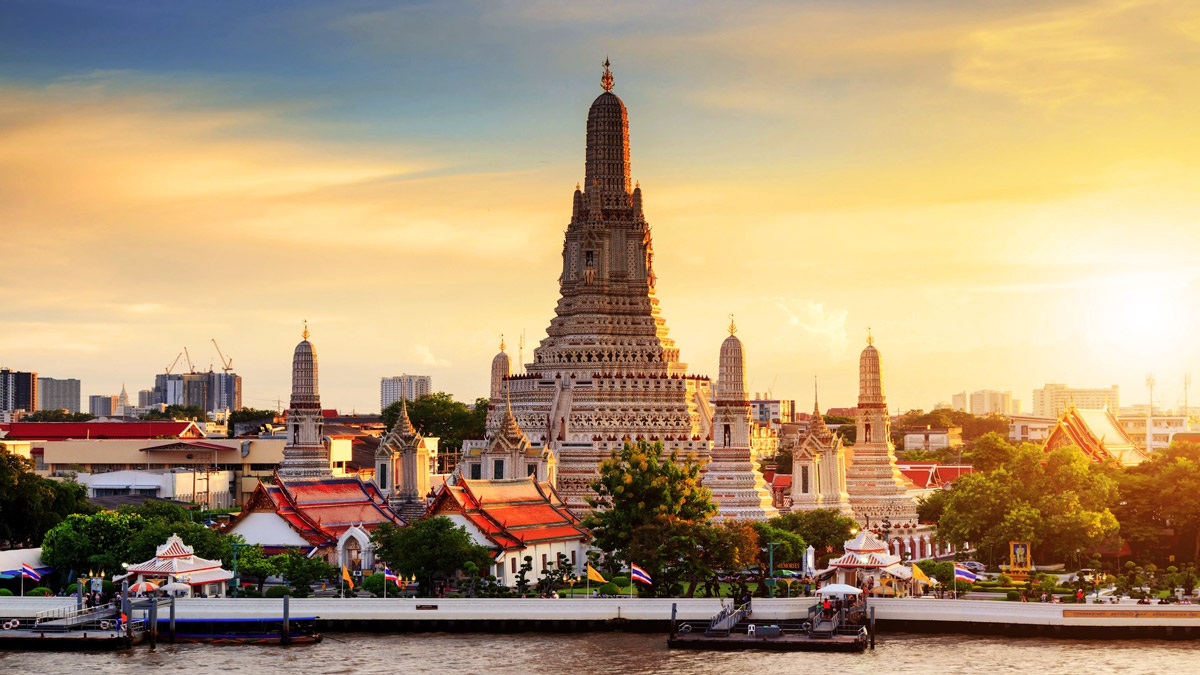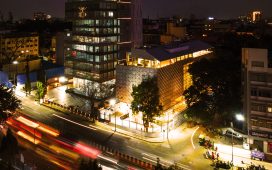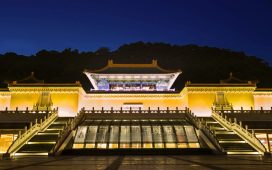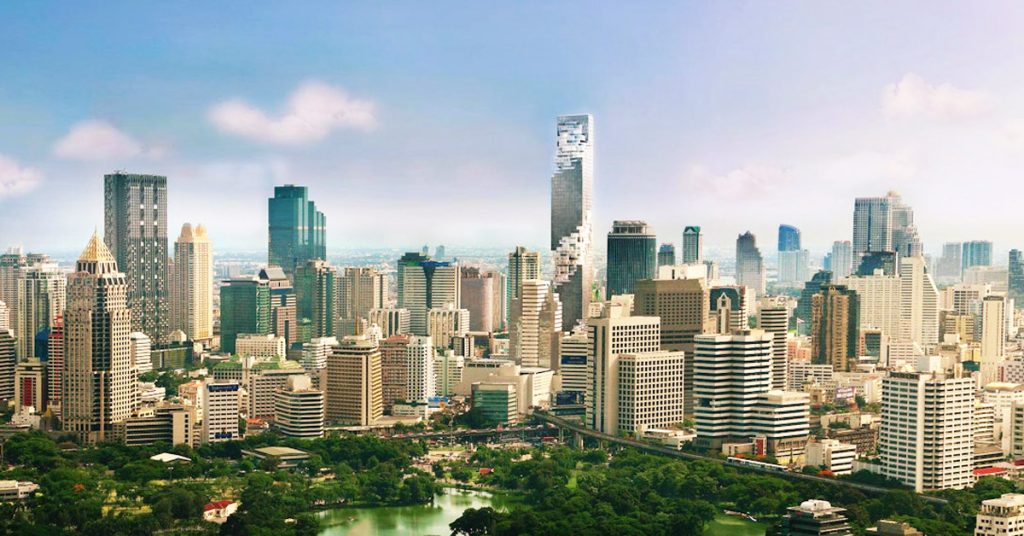
Bangkok isn’t just a destination — it’s an experience that electrifies every sense. From the moment I arrived, I was pulled into its whirlwind rhythm: tuk-tuks racing through neon-lit streets, golden temples gleaming under the sun, and the irresistible aromas of street food drifting from every corner. This city doesn’t rest — and neither did I.
History of Bangkok
Bangkok became Thailand’s capital in 1782 when King Rama I established it as the seat of the Chakri dynasty. Built along the Chao Phraya River, it quickly grew into a vibrant trading port. Over centuries, Bangkok expanded with glittering temples, royal palaces, and a lively canal network that earned it the nickname “Venice of the East.” Western influences in the 19th century modernized the city, but its traditions remained deeply rooted in Buddhism and monarchy. Today, Bangkok is a dynamic metropolis where history, spirituality, and modern energy collide in dazzling fashion.
Landmarks & Architecture
Bangkok is a city where the past and present don’t just sit side by side — they collide spectacularly. I remember walking through quiet temple courtyards and, minutes later, craning my neck up at glittering skyscrapers that seemed to stretch into forever. Each landmark had a story, and together they painted a portrait of a city forever balancing its traditions with its bold modern spirit.

The Royal Palace
No place captures the grandeur of Bangkok like the Grand Palace. Stepping inside felt like crossing into another world — one of shimmering gold, intricate mosaics, and a history that has shaped Thailand for centuries. Built in 1782, this was once the official residence of the Thai kings, and it remains a symbol of national pride.
The palace complex is a maze of ornate halls, courtyards, and temples, each corner more elaborate than the last. The highlight is the Temple of the Emerald Buddha (Wat Phra Kaew), home to Thailand’s most sacred image of the Buddha, carved from a single piece of jade. Inside, the atmosphere was hushed and reverent, even amid the crowds — it felt like the spiritual heart of the nation.
Walking through the palace grounds, I was dazzled by the sheer detail: golden spires piercing the sky, walls covered in mythological murals, and guards standing at attention in crisp white uniforms. It was overwhelming, yet deeply moving — a reminder that Bangkok isn’t just about its energy and chaos, but also its history and devotion.
Spotlight: King Power Mahanakhon

Bangkok isn’t only about temples and tradition — it’s also about pushing the skyline higher and brighter. The Mahanakhon Building, with its pixelated, futuristic design, is one of the city’s boldest architectural statements. I took the glass elevator up to the SkyWalk, where the city unfolded beneath me in every direction.
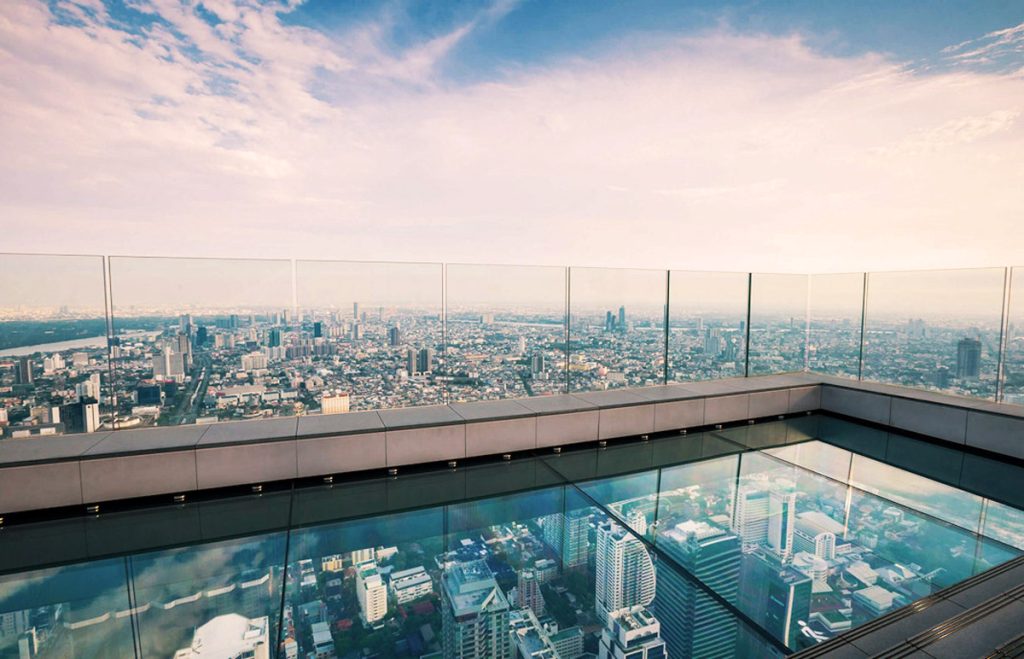
Standing on the glass floor with Bangkok’s chaos buzzing hundreds of meters below was both exhilarating and terrifying — but absolutely unforgettable. At sunset, the skyline glowed in orange and pink, and as night fell, the city lit up like a circuit board. This wasn’t just a view; it was an experience that captured Bangkok’s modern energy.
Temples

The temples of Bangkok are more than just religious sites — they’re gateways into the city’s soul. Stepping inside each one felt like hitting a pause button, where the rush of traffic faded and was replaced by incense smoke, chanting, and golden light. Every temple had its own character, its own rhythm, and visiting them gave me a deeper sense of the city’s heartbeat.
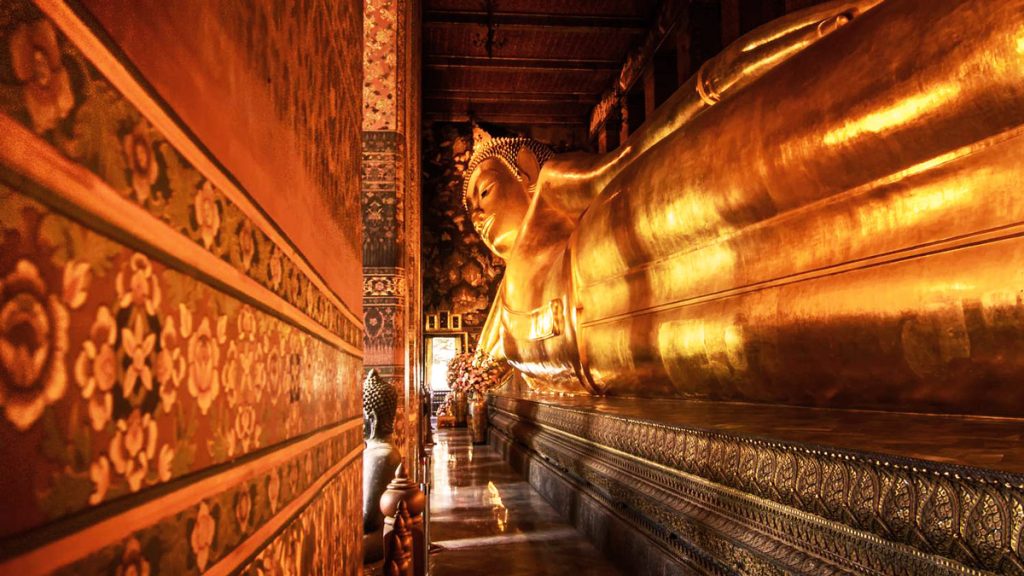
- Wat Pho – Known for its colossal Reclining Buddha, stretching 46 meters long and covered in gold leaf, this temple is both awe-inspiring and tranquil. The soles of the Buddha’s feet are inlaid with mother-of-pearl, and I found myself staring at the delicate detail for ages. Wat Pho is also the birthplace of Thai massage — I couldn’t resist getting one from the temple’s traditional school, and it was the most authentic massage I’ve ever had.
- Wat Paknam Phasi Charoen – This temple stole my attention with its massive golden Buddha — soaring over 69 meters high, one of the tallest in the city. The sheer scale left me speechless. Inside, a dazzling emerald-colored glass stupa shimmered under celestial murals, almost like stepping into another world. Its quiet canalside location made it feel like a hidden sanctuary away from the city’s frenzy.
- Wat Saket (The Golden Mount) – Perched atop an artificial hill, Wat Saket is reached by climbing 300 winding steps lined with prayer bells and fluttering flags. The climb itself felt spiritual, and when I reached the golden chedi at the top, the panoramic view of Bangkok’s Old City was mesmerizing. It’s especially atmospheric during the annual temple fair in November, when lanterns and candles light up the mount.
- Wat Benchamabophit (The Marble Temple) – A masterpiece of Thai architecture built with Italian Carrara marble, this temple is refined and elegant. The white marble courtyards reflect the morning light beautifully, and the roof’s golden tiers gleam against the sky. Inside, a serene Buddha statue sits in a hall of red and gold — a contrast so striking it almost felt surreal. Visiting here at sunrise, with just a few monks moving quietly about, was one of my calmest moments in Bangkok.
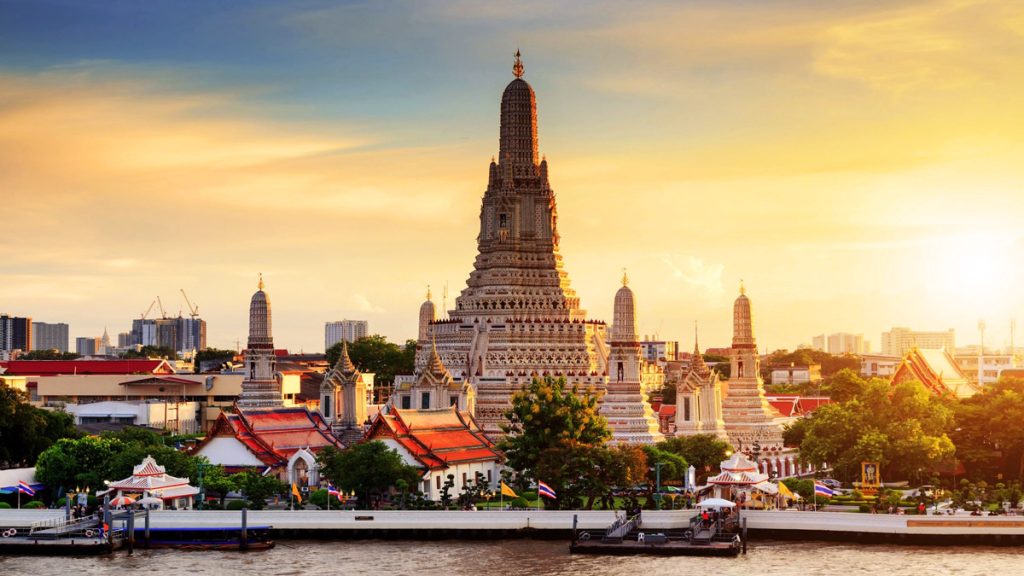
- Wat Arun (Temple of Dawn) – Rising majestically on the west bank of the Chao Phraya River, Wat Arun is breathtaking at any time of day, but sunset is when it truly glows. Its central prang (spire), encrusted with porcelain and seashells, sparkled in the fading light as boats drifted by. Climbing partway up the steep steps, I caught views of the river and city that made me fall in love with Bangkok all over again.
Museums & Culture
Bangkok’s culture is not something you just see — it’s something you feel, layered into its museums, art, and everyday rituals. From elaborate museums filled with treasures to monks collecting alms at dawn, the city constantly reminded me that its soul is as complex as it is colorful.
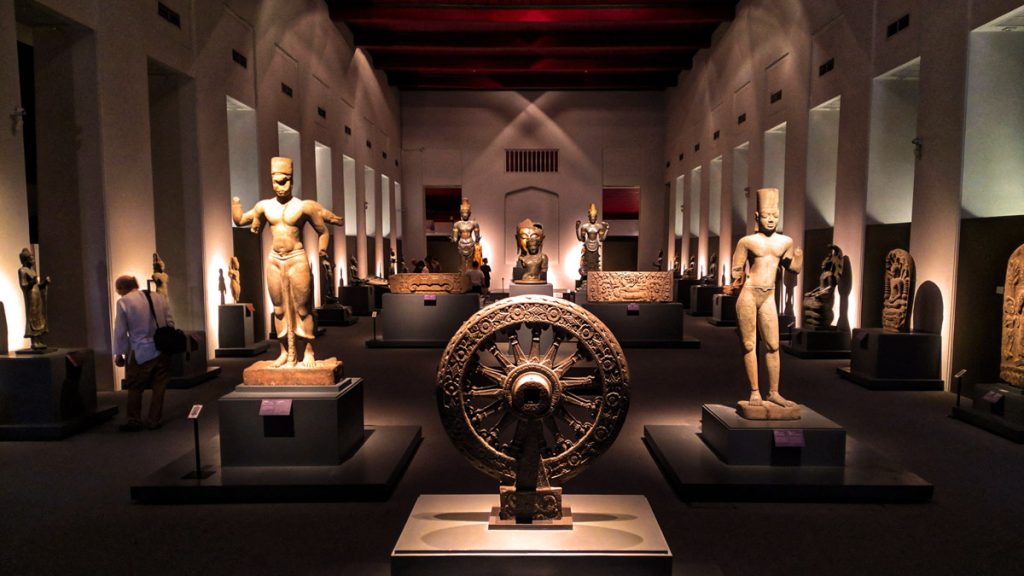
- Bangkok National Museum – Showcasing centuries of history, from royal regalia to ancient Buddhist art, this museum was like walking through Thailand’s timeline.
- Jim Thompson House – This teakwood house wrapped in gardens felt like a peaceful escape. Its story of silk and design revealed Bangkok’s ties to global creativity.
- MOCA (Museum of Contemporary Art) – A splash of energy and color. Thai modern art here bursts with imagination, proving Bangkok isn’t just rooted in tradition — it’s pushing forward.
- Erawan Museum – A surreal sight: a three-headed elephant towering over the city. Inside, spiritual and artistic treasures left me awestruck.
Day Trip to the Floating Markets
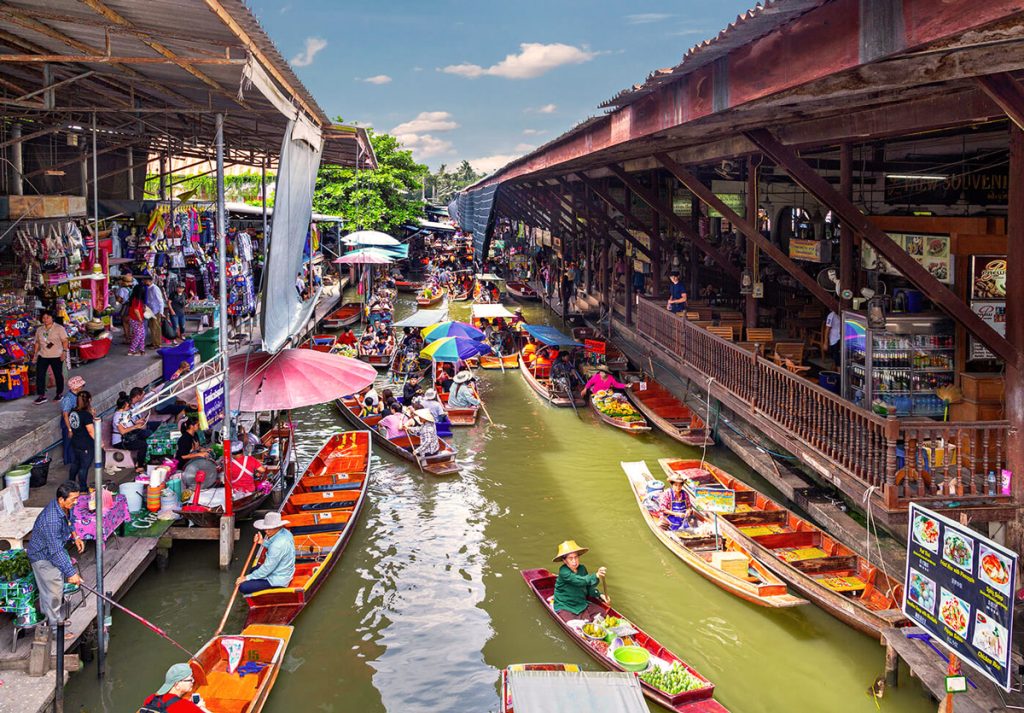
If Bangkok is alive, then its canals are its veins — and visiting a floating market felt like watching life flow on water. I’ll never forget gliding past boats stacked with fruit, sizzling seafood grilled right on the river, and vendors shouting prices in melodic Thai tones. The colors, sounds, and smells collided in the most exhilarating way.
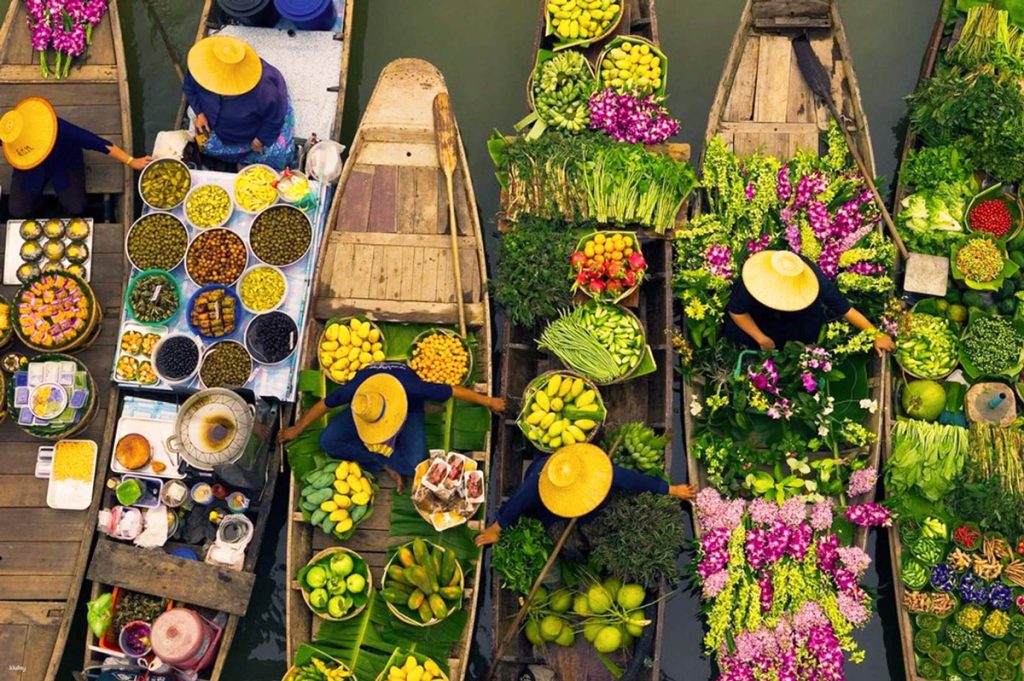
- Damnoen Saduak Floating Market – A lively, chaotic, unforgettable scene. Tourist-heavy? Sure. But eating mango sticky rice from a passing boat while drifting along the canal is a memory that stuck with me.
Hidden Gems
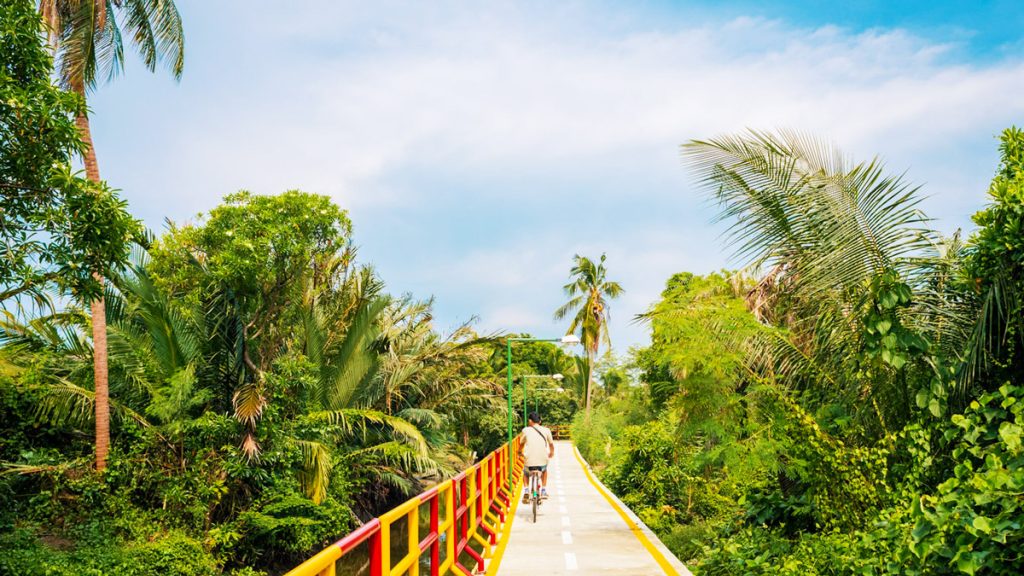
Bangkok’s real charm lies in the surprises — the little detours that most visitors skip. Some of my favorite moments came from wandering into quiet pockets of the city, where life slowed down and the chaos melted away.
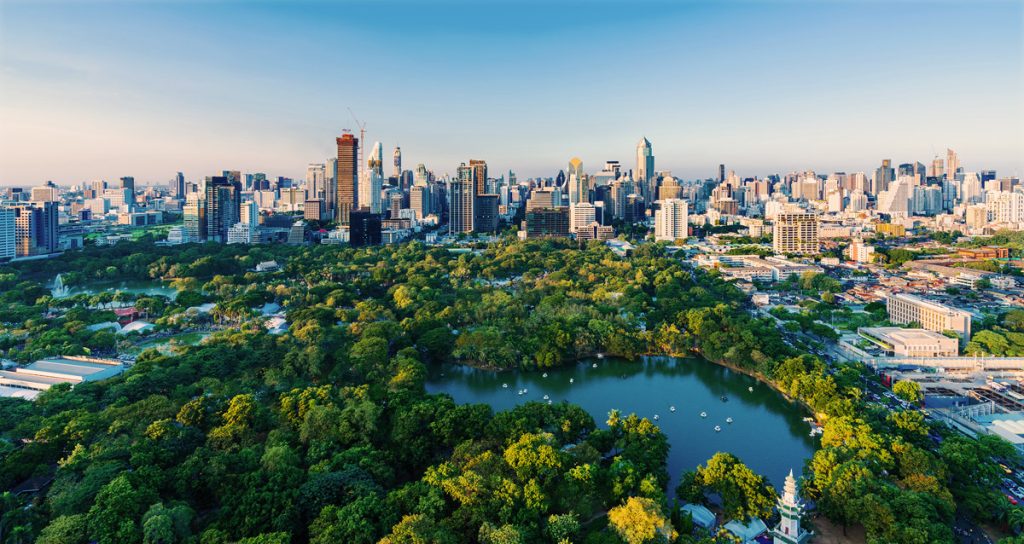
- Bang Kachao (The Green Lung) – Often hailed as Bangkok’s “Green Lung,” Bang Kachao has even been recognized internationally, Time Magazine named it the “Best Urban Oasis” in its Best of Asia series. It’s a favorite escape for nature lovers and cyclists alike, with winding bike paths shaded by palms, hidden temples tucked into greenery, and floating cafés where you can catch your breath while soaking up the quiet.
- Artist’s House (Baan Silapin) – Tucked along a canal, this wooden home doubled as a gallery and café. Watching a puppet show here felt like stepping back into tradition while sipping on a Thai iced tea.
- Talad Rot Fai (Train Night Market) – More than just a market, this is a nighttime playground of neon lights, vintage treasures, and endless street food. I browsed stalls selling old cameras and vinyl before diving into smoky barbecues, spicy noodles, and even Thai-style cocktails. With live music, buzzing bars, and a mix of locals and travelers, it’s one of the most vibrant night markets I’ve ever experienced.

Food & Street Eats
Eating in Bangkok isn’t just about satisfying hunger — it’s an adventure, a ritual, a thrill. The energy of the city peaks at night, when sizzling woks light up alleyways and queues form at stalls that could rival Michelin-starred restaurants. Every bite carried a story, and every dish pulled me deeper into the city’s rhythm.

- Pad Thai at Thip Samai – Wok-fired with flames licking the air, smoky and tangy — it’s everything you hope Pad Thai will be.
- Som Tam (Papaya Salad) – Freshly pounded to order on the street, fiery and refreshing all at once.
- Boat Noodles at Victory Monument – Served in tiny bowls, rich and spiced. I couldn’t stop at just one… or five.
- Satay Skewers on Sukhumvit – Juicy, smoky, dripping in peanut sauce, eaten standing by the grill.
- Mango Sticky Rice – Sweet, cooling, indulgent — it became my nightly ritual.
Different districts brought different flavors: Yaowarat’s seafood feasts, Si Lom’s late-night curries, and Sukhumvit’s fusion twists. Everywhere I turned, the city fed me something unforgettable.

Neighborhoods
Bangkok is so big and diverse that moving between neighborhoods feels like crossing into new worlds. Each had its own energy, and exploring them revealed the many personalities of the city.
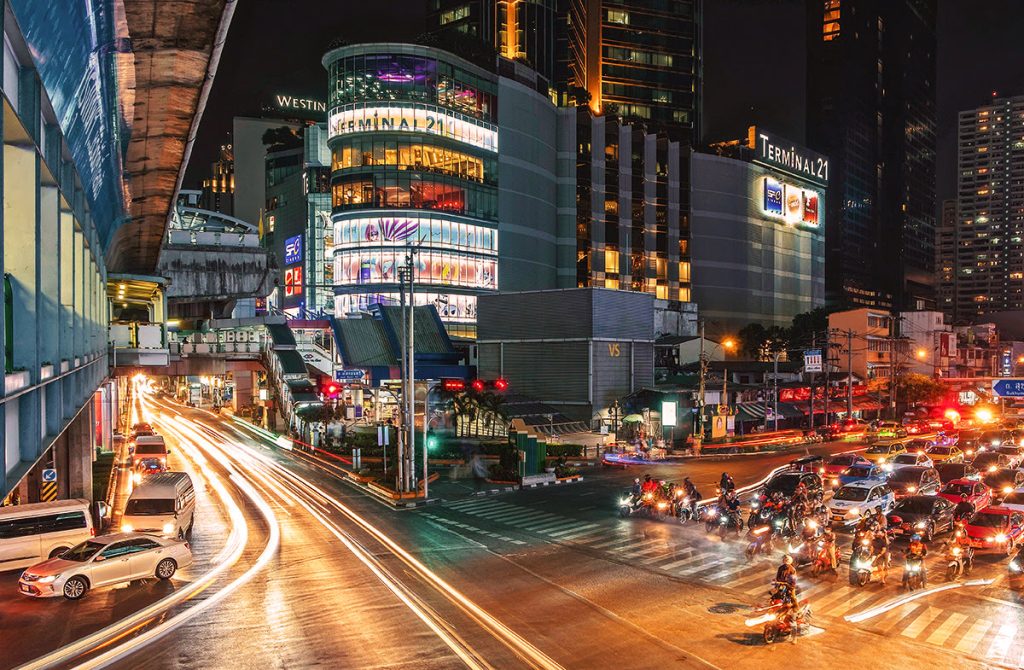
- Sukhumvit – Trendy, fast-paced, alive with bars and rooftop lounges.
- Silom – Suits and skyscrapers by day, street food and nightlife by night.
- Old City (Rattanakosin) – The timeless heart, where temples and palaces remind you of Bangkok’s roots.
- Chinatown (Yaowarat) – Neon lights, sizzling woks, seafood stalls — it’s a feast for every sense.
- Thonglor – Young, stylish, modern — cafés, boutique shops, and cocktail culture.
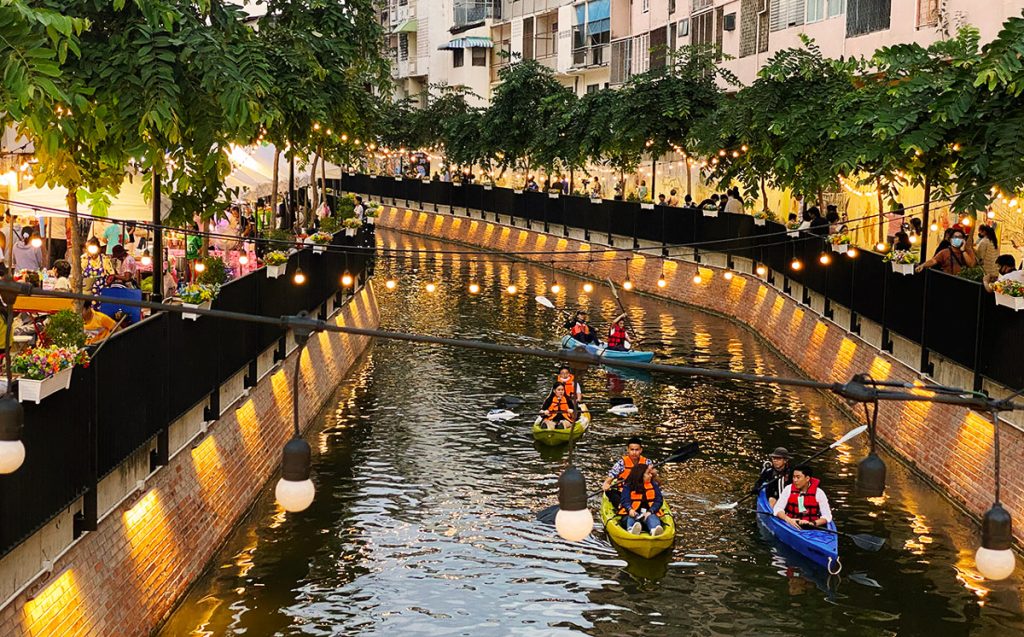
No two neighborhoods felt the same. Exploring them was like discovering five different cities rolled into one.
Practical Tips
Bangkok can feel overwhelming, but that’s part of its charm. A few things helped me make the most of it:

- Getting Around – The BTS Skytrain and MRT saved me from traffic, but a tuk-tuk ride is a must-do at least once.
- Dress Smart – Temples require shoulders and knees covered — carry a scarf or light wrap.
- When to Visit – November to February brings slightly cooler weather, but the city buzzes year-round.
- Stay Cool – Always carry water and duck into 7-Eleven for a blast of air-con.
- Cash Rules – Small bills are essential for street eats and markets.
Final Thoughts
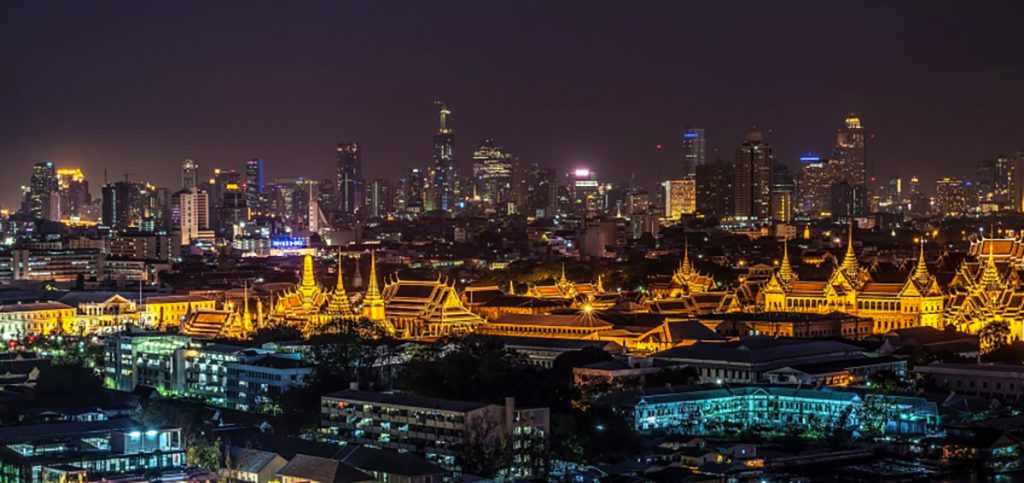
Bangkok is energy incarnate — chaotic, spiritual, flavorful, and alive. It’s a city that wakes up your senses and dares you to dive in. Between its sacred temples, endless street food, hidden escapes, and nights that seem to stretch forever, Bangkok left me exhilarated, exhausted, and completely enchanted. It’s not just a place I visited — it’s a place I felt.

